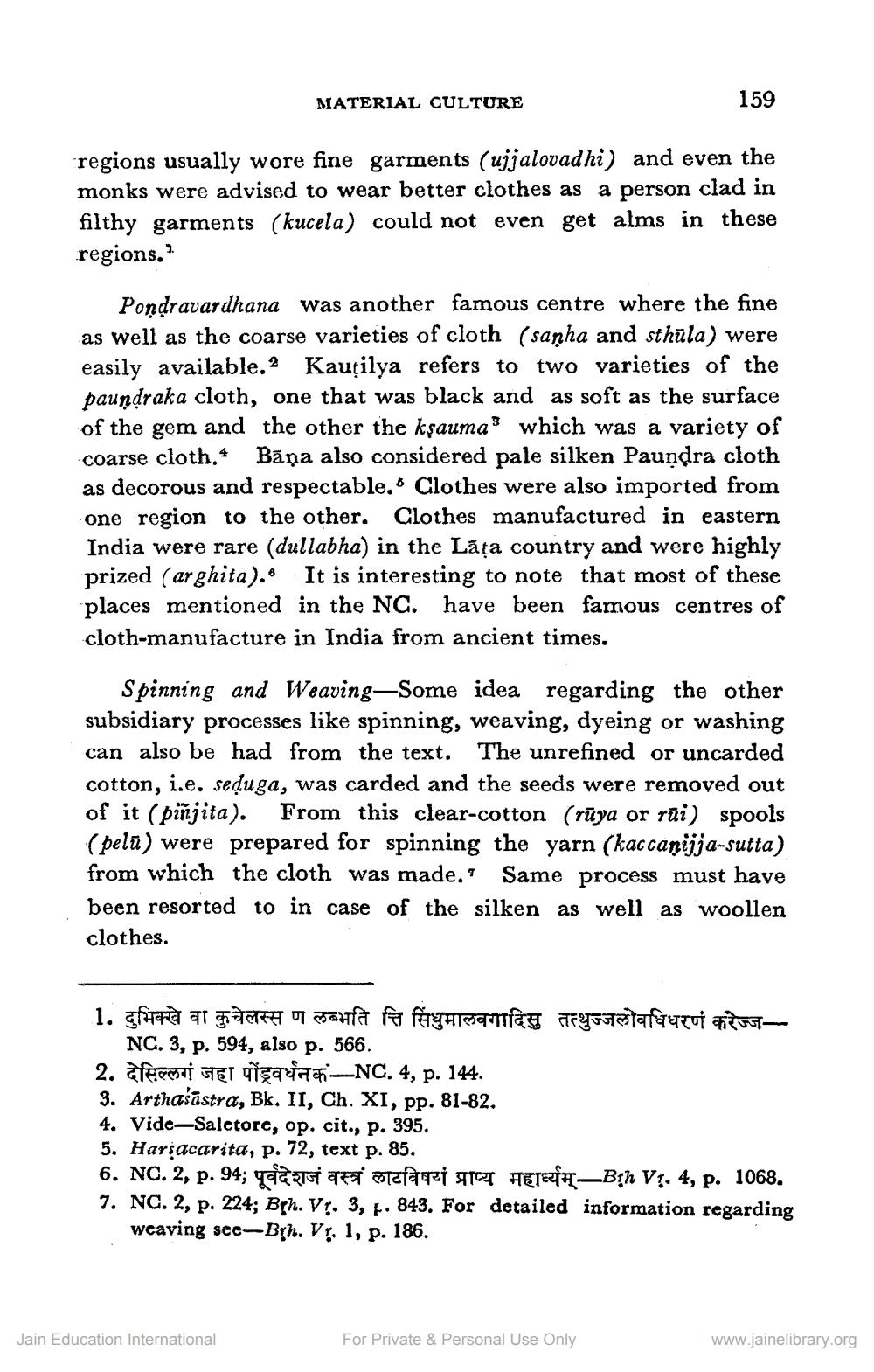________________
MATERIAL CULTURE
159
regions usually wore fine garments (ujjalovadhi) and even the monks were advised to wear better clothes as a person clad in filthy garments (kucela) could not even get alms in these regions."
Pondravardhana was another famous centre where the fine as well as the coarse varieties of cloth (sanha and sthala) were easily available.2 Kauçilya refers to two varieties of the paundraka cloth, one that was black and as soft as the surface of the gem and the other the kşauma' which was a variety of coarse cloth.4 Bāna also considered pale silken Paundra cloth as decorous and respectable. Clothes were also imported from one region to the other. Clothes manufactured in eastern India were rare (dullabha) in the Lāța country and were highly prized (arghita). It is interesting to note that most of these places mentioned in the NC. have been famous centres of cloth-manufacture in India from ancient times.
Spinning and Weaving—Some idea regarding the other subsidiary processes like spinning, weaving, dyeing or washing can also be had from the text. The unrefined or uncarded cotton, i.e. seduga, was carded and the seeds were removed out of it (päñjita). From this clear-cotton (rūya or rūi) spools (pelu) were prepared for spinning the yarn (kac canijja-sutta) from which the cloth was made.' Same process must have been resorted to in case of the silken as well as woollen clothes.
1. दुभिक्खे वा कुचेलस्स ण लब्भति त्ति सिंधुमालवगादिसु तत्थुज्जलोवधिधरणं करेज्ज
NC. 3, p. 594, also p. 566. 2. afereeGET THE qua NC. 4, p. 144. 3. Arthašāstra, Bk. II, Ch. XI, pp. 81-82. 4. Vide-Saletore, op. cit., p. 395. 5. Harsacarita, p. 72, text p. 85. 6. NO. 2, p. 94; alati af stafari TTCT HET=H_Bth V:. 4, p. 1068. 7. NC. 2, p. 224; Bph. V. 3, p. 843. For detailed information regarding
weaving sec-Brh. V, 1, p. 186.
Jain Education International
For Private & Personal Use Only
www.jainelibrary.org




